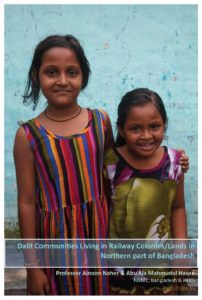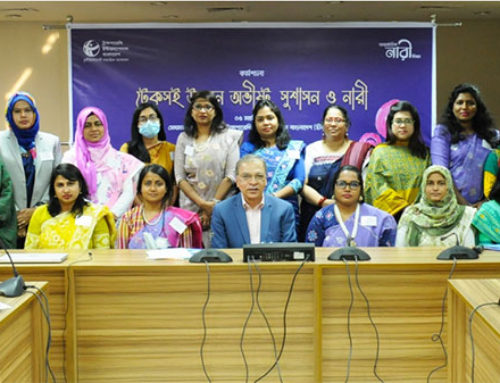 In Bangladesh, there are approximately 160 million people. Although more than 80% of them are Bengali Muslims, there still is significant diversity within this population in terms of ethnicity, religion, language, etc.
In Bangladesh, there are approximately 160 million people. Although more than 80% of them are Bengali Muslims, there still is significant diversity within this population in terms of ethnicity, religion, language, etc.
‘Dalits’ area special category among these diverse groups who are receiving attention in recent years both internationally and nationally. However, while the development agencies and activists are working on the ‘Dalit’ issue, the academic writing on Dalit here is still evolving conceptually and empirically. There is disagreement surrounding the size of the ‘Dalit’ population in the country. Some sources estimate there to be around half a million ‘Dalit’ (Parvez & Islam, 2014: 24), while others estimate the number to be ranging between 3.5 to 5.5 million (Chowdhury 2009:1–‐2).
Again, The Department of Social Welfare survey claims the number of ‘Dalit’ in the country around 4.35 million (Fair: 2015). Just like there is dispute surrounding the number of ‘Dalits’ in the country, there is also similar debate around who should be identified as ‘Dalit’. However, it is certain that among the ‘Dalits’ a large section is historically involved with cleaning or sweeping services and they are popularly known as ‘Harijans’/”Jat sweepers”. Most of their predecessors were brought to what is now Bangladesh mainly from the current states of Bihar, Uttar Pradesh, Andhra Pradesh and Madhya Pradesh of India by the British colonial administration during the first half of the 19th Century.
‘Dalits’, in general, are one of the most marginalised groups in Bangladesh and are often subject to discriminatory treatment. They have been oppressed by the dominant groups historically. The majority of the ‘Dalits’ are very poor, under–‐ privileged and have limited job opportunities. Moreover, they are politically under–‐represented and many of them have to live in inhumane conditions. Socially excluded, they are stigmatised and isolated from mainstream society. The focus of this study is to understand the multiple aspects of the marginalisation and vulnerability of the ‘Dalit’ Community living in the railway land of North Bengal.
Download the Paper



